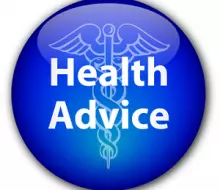Spread and Prevention of Chicken Pox.
1. Chicken pox is a highly contagious disease.
Chicken pox is caused by a virus and spreads very easily from person to person. If it attacks one person in a class or household, several others persons in the class or household are likely to have it.
It has a characteristic rash that is more on the trunk (body) than on the face, feet and hands. It starts with fever, and general feeling of unwell. The rash is the give-away sign. The soles and palms are spared of the rash which dries up after sometime.
2. Chicken Pox spreads from person to person by direct contact.
The spread of the disease is in most cases by direct contact. The fresh rash has fluid which contains the virus; a person can contact the disease by direct with this fluid. Items soiled by the patients secretion is also a source of infection. Persons can also be infected by droplets resulting from sneezing and/or coughing. If a pregnant woman has chicken pox, the baby in the uterus can be infected. However, the dried rash does not contain the virus and therefore not infective.
In a few cases, a patient may not fully recover, the illness remains in a very subdued form with occasional reactivation in the elderly and in those with low immunity.
3. It is more severe in Adults.
Chicken pox is more severe in adults and pregnant women than in children. Other person likely to have severe infections include infants, patients on steroids and certain other drugs. Primary School children cope easily with the illness but the parents in some cases become very severely hit. Most cases occur in children before the age of ten years. Though death is rare in uncomplicated cases – about one and hundred, fatality is forty times higher in adults than in children.
4. A single attack confers lifelong immunity.
Full recovery from an attack of chicken pox gives a lifelong immunity. In a few cases, the virus persists in a low form but occasional reactivation in old people and in those with low immunity.
5. Possible Complications of Chicken Pox
Complications are not uncommon particularly in adults. These include – skin, mouth and throat, infections, pneumonia, hepatitis and joint infection. The kidneys, brain and nerves could also be affected. These complications are more common in people who have low immunity or are on certain drugs.
6. Prevention is by Isolation of patient, vaccination.
Prevention is by:
(1)Isolation of the patient
(2)Care of contacts
(3)Vaccination
All patients should be violated as long a rash remains fresh. Children affected must stop school for at least six days after appearance of the rash. It is expected that the rash would dry up within the period. All persons already to the patients must wash their hands thoroughly.
Depending on the susceptibility of the contacts, appropriate actions ranging from anti-viral drugs to vaccination could be taken by the attending physician.
Vaccine is available, it contains the weakened live virus.


